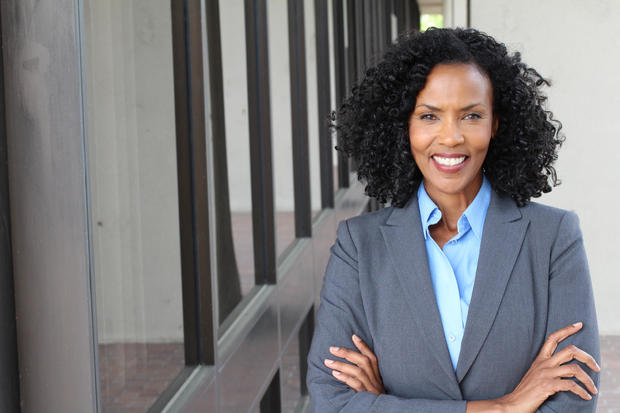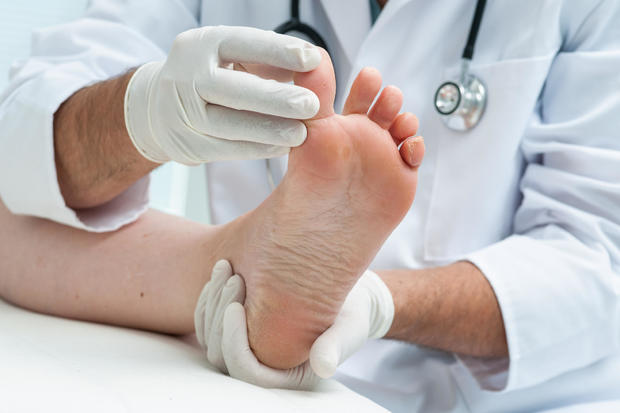The 7 highest paying jobs for men and women
One twist on the gender pay gap -- or when women earn less for the same work as men -- is that higher-paid women are actually hit harder by the phenomenon than their lower-paid counterparts.
That disparity is evident in the top-paying jobs for men and women, as measured by data collected by the U.S. Census Bureau's American Community Survey. The highest-paying professions for women provide considerably lower paychecks than those earned in the top-paying careers for men. In several fields, the pay gap is wider than the national average, which shows the pay hit that women face even in high-achieving professional fields.
Economists studying the issue have found that -- even when controlled for education, experience and profession -- women in the U.S. are paid less than men. Along with women who work in highly paid fields, the worst hit are women with children, older women and women of color, the Economic Policy Institute found in a report published last month.
The overall gender pay gap is about 80 cents to every $1 earned by men, but women at the top of the wage-distribution spectrum earn just 74 cents for every $1 paid to their male counterparts, the study found.
"Men are paid more in nearly every occupation, and people aren't biased against men in most occupations, except in nursing and for child-care workers," said Catherine Hill, vice president for research at the American Association of University Women (AAUW), a group that promotes equity and education for women and girls.
She added, "At the very highest levels, we think there is prejudice against women as leaders compared with their overall competency."
Wages for lower-paid women are supported by minimum wage laws, which ensure that all workers at the baseline pay will earn the same regardless of gender. Some middle-income jobs with union protections also help narrow the pay gap, while employers that offer wage transparency -- such as government agencies -- also tend to have smaller gender wage gaps.
Yet most top-paying professions lack those mechanisms to help trim the pay gap, while women are also less likely to negotiate for higher pay than men, which can hinder them throughout their careers, said Cameron Huddleston, a columnist at GoBankingRates.
Some lawmakers are debating how pay history may hinder women from achieving wage equity with men. Earlier this year, Massachusetts became the first state to pass a law that bars employers from asking applicants how much they earned in their previous job, with the idea that it could break a cycle of unfair pay for women and people of color.
Read on to learn about the seven top paying jobs for men and women.
Women: No. 7, CEO, $101,174
Women who lead companies make about 77 cents for every $1 earned by male CEOs, according to Census Bureau data.
Men outnumber women in CEO roles by more than three-to-one, although that ratio grows much wider when only considering the large businesses that comprise the S&P 500. Women lead only 4.6 percent of the corporations within the index, such as General Motors' Mary Barra and Pepsico's Indra Nooyi.
Women: No. 6, Lawyers: $101,219
Women have made progress in the legal field, but are still under-represented compared with male attorneys. Women attorneys also earn just 77 cents for every $1 paid to their male counterparts.
The gap appears early, with women students at top 50 law schools holding only 46 percent of leadership positions and just four of 10 editors-in-chief roles at their law journals.
Women: No. 5, Pharmacists, $112,232
When it comes to equalizing the gender pay gap, pharmacists apparently have the prescription.
Women slightly outnumber men in the job, with about 108,000 women pharmacists working in the profession compared with 102,000 men. Women pharmacists earn 93 cents for every $1 earned by their male counterparts, the survey data shows.
That represents a significant change from the mid-1960s, when most pharmacists were men. Women gained a foothold in the occupation because of structural changes in the industry, which shifted from pharmacist-owned independent stores to bigger drug-store chains, according to research from economists Claudia Goldin and Lawrence Katz. The job tends to be family friendly, without penalizing workers who need flexible hours, they found.
Women: No. 4, Architectural and engineering managers: $120,158
These managers plan and direct activities in architectural and engineering firms, according to the Bureau of Labor Statistics. Typically, people in these roles have at least a bachelor's degree in engineering or an architectural professional degree, while others have MBAs and other post-graduate degrees.
Men far outnumber women in these roles by a nearly 10-to-one ratio. The pay gap in this field is the narrowest among the seven most highly paid jobs for men and women, with women earning 96 cents for every $1 earned by their male counterparts.
Women: No. 3, Dentists: $121,953
Even though women are approaching parity in dental school enrollment, the field isn't yet offering close to equal pay for women dentists versus their male counterparts. Women in the field earn about 80 cents for every $1 earned by their male colleagues.
One reason for the pay gap could be the structure of dentistry, with many dentists owning their own practices. Women are less likely to own their own practices than men, often taking jobs at at offices owned by another dentist, a study found. Women are also more likely work in general dentistry rather than specialized, higher-paying fields.
Women: No. 2, Nurse anesthetists: $142,372
Nurse anesthetists work with anesthesiologists and surgeons to administer anesthesia and monitor patients during surgical procedures. While women still outnumber men in this role, it's become a popular choice for male workers. In all nursing fields, men's representation is the highest among nurse anesthetists, the Census Bureau found, noting that 41 percent are now men.
While nursing is seen as a traditionally female job, men who have moved into the field are now outearning women -- and that's in every nursing occupation, including nurse anesthetists, the Census noted. Women nurse anesthetists earn about 87 cents for every $1 earned by their male colleagues.
Women: No. 1, Physicians and surgeons, $150,053
Women who work as doctors and surgeons suffer from the biggest pay gap among the seven top paying professions, with women in the fields earning 71 cents for every $1 earned by their male counterparts.
A study of faculty members at 24 public medical schools found that even after controlling for experience and specialties, among other factors, women faculty members earned an average of 8 percent less than their male counterparts. The reasons could be discrimination, as well as differences in how men and women negotiate salaries, one of the authors told Bloomberg News.
Men: No. 7, Architectural and engineering managers: $125,512
Like women in these roles, men are richly rewarded for their expertise, but tend to make about 4 percent more than their female counterparts. While it's one of the best-paying jobs for both men and women, it's not a fast-growing field, with the Bureau of Labor Statistics forecasting that jobs in these roles will increase by just 2 percent through 2024.
Men: No. 6, Lawyers: $130,819
The legal profession remains male-dominated in the U.S., both when it comes to the number of attorneys and their pay. There are almost twice as many male attorneys as women in the field, while men earn an average of 23 percent more than their female counterparts.
Men: No. 5, CEO: $130,830
About three-quarters of the country's CEOs are men, according to the American Community Survey. Male CEOs earn about 23 percent more than their female counterparts.
Even at the biggest companies, women CEOs tend to make less than male corporate leaders, The Wall Street Journal found in a 2014 survey. Still, at the highest level the gender wage gap in the C-suite has narrowed over the past few years, the survey found.
Men: No. 4, Podiatrists, $135,579
This relatively small group of medical professionals is also one of the highest paid. Entering the field requires a doctor of podriatic medicine degree and completion of a three-year residency program. Podiatrists also need to be licensed in the state where they work.
The job outlook is fairly strong, with the Bureau of Labor Statistics projecting jobs to grow by 14 percent through 2024, or faster than average. Because of rising rates of diabetes, more Americans are projected to need care from a podiatrist in the coming years.
Men: No. 3, Dentists: $151,764
Dentistry is another fast-growing, high-paying medical profession. Men not only dominate the field, representing about three out of every four dentists, but they also outearn their female counterparts. On average, men in the field earn about 20 percent more than women dentists.
Men: No. 2, Nurse anesthetists: $162,997
Traditionally a female field, nursing has seen rising numbers of men enter the profession, although they are more likely to be found in higher-paying nursing occupations, such as nurse anesthetists.
In fact, male representation in nursing is highest in this field, with men now comprising about 41 percent of practitioners, according to Census data. Men make an average of about 13 percent more than women in the occupation.
Men: No. 1, Physicians and surgeons, $211,526
The most lucrative careers for men can be found as surgeons and doctors. This part of the medical field remains dominated by men, who also earn considerably more than their female colleagues. Women physicians and surgeons take home just 71 cents for every $1 earned by men in the same fields.
While overt bias has declined overall, the AAUW's Hill said, less explicit bias may be playing out in what women are paid, especially in top-earning professions.
"I've been startled by the gender biases that people are not admitting to," she said. As for narrowing the gender pay gap completely, Hill said it may be stubborn problem for years to come. "We're not seeing the same increases" in women's pay as in earlier decades, she noted.













